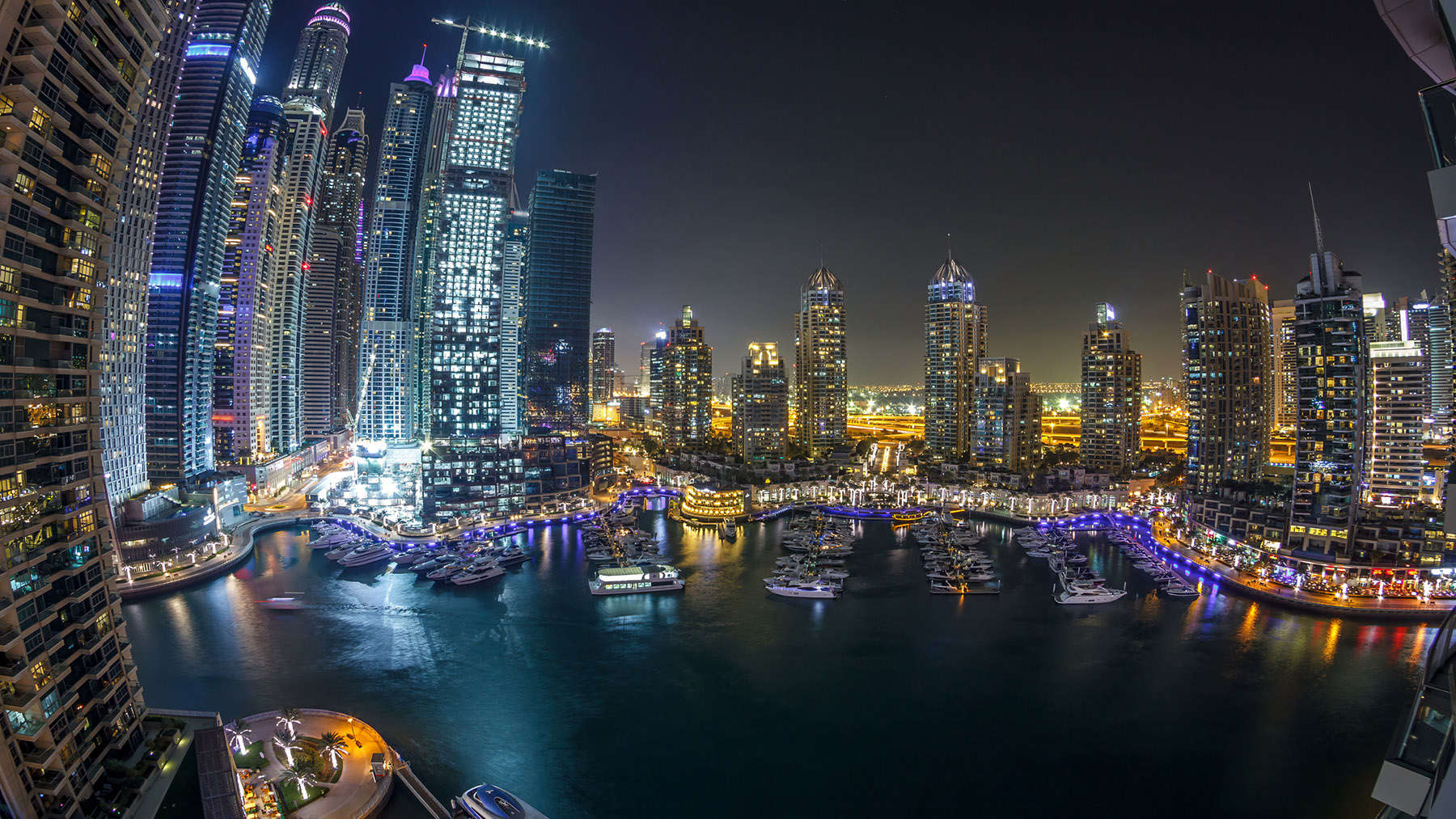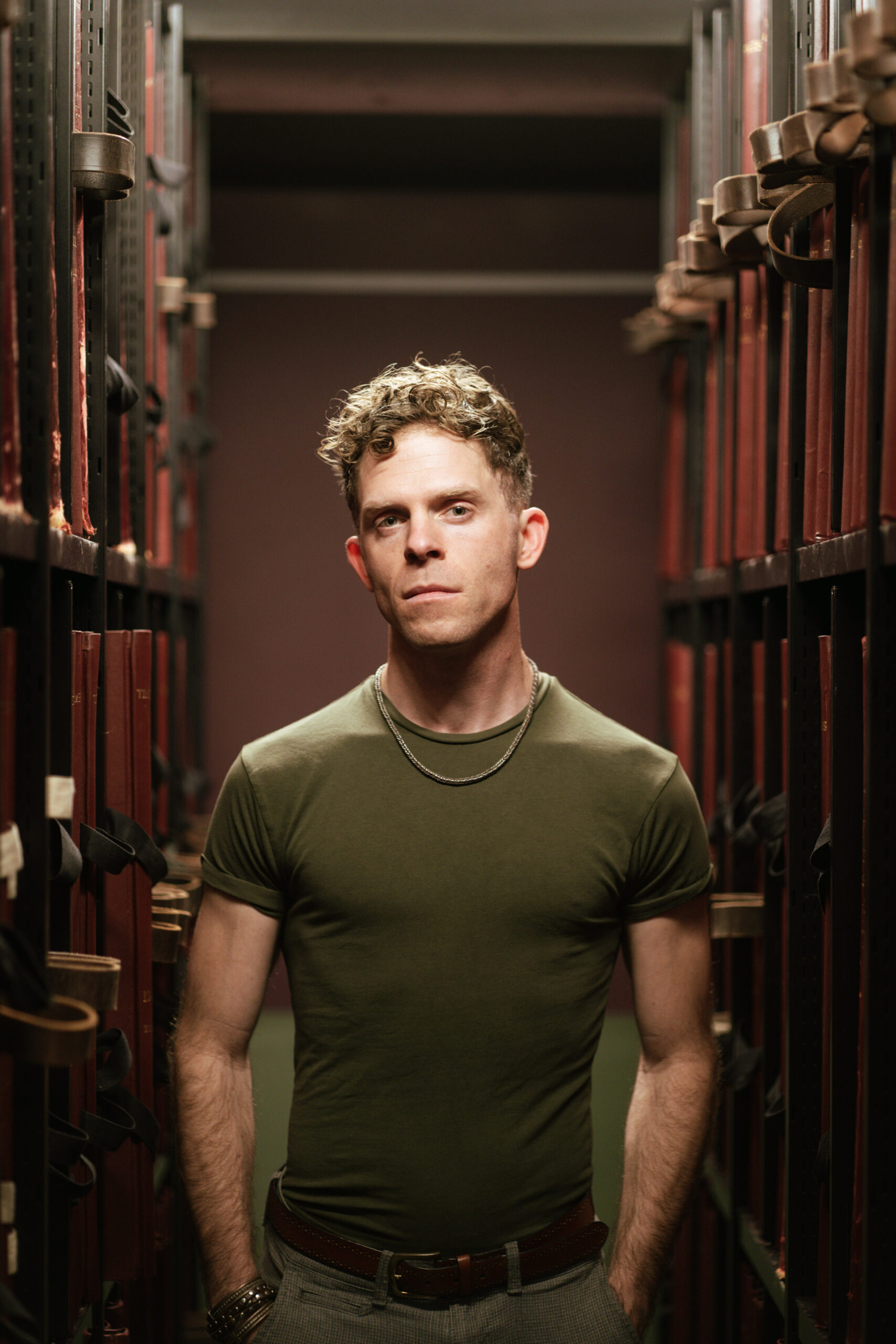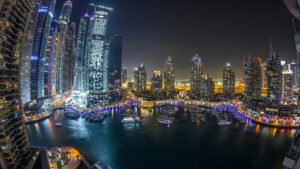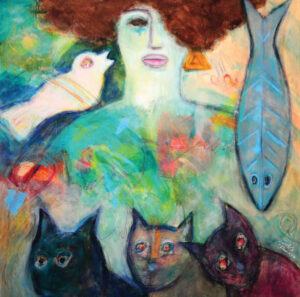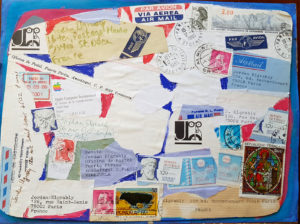The vapid expat, the oppressed migrant laborer. Non-citizen Gulf residents have limited range in media depictions – and rarely have we heard from them in literature. Two new novels might change all that.
Shape of an Apostrophe by Uttama Kirit Patel
Serpent’s Tail, 2025
ISBN 9781800819900
Gulf by Mo Ogrodnik
John Murray Press, Mar. 2026
ISBN 9781399815291
The writer Joseph O’Neill once recalled in an interview how he became fixated on writing The Dog, his Booker longlisted novel set in the United Arab Emirates. “I kept overhearing people, English people especially, talking about Dubai — about going there on holiday, or making money there, or dreaming of going,” he said. Eventually, O’Neill conducted an internet search of the country’s largest city and was “confronted with extraordinary photographic renderings.” Finally, he “physically visited the place — twice, for about ten days at a time.”

This is the typical shape to the inspiration and research of English-language narratives set in the Gulf States: processes both catalyzed and molded by the visitor’s gaze. O’Neill’s arc — of stumbling upon and then dreaming of Dubai before an expeditious visit — is also often built into the plotting of similar stories, including a recent viral essay on a writer’s sole visit to the city. “I had thought it would be fun — funny, even — to experience the disorientation of standing at the pivot between two world systems,” Caitlín Doherty wrote in a June article published in the New Left Review.
These narratives of the Gulf frequently recount a moral awakening to the unfamiliar setting’s economic stratification, often while trafficking in lists of fresh-on-the-ground observations unremarkable in any global metropolis — “pan-Asian restaurants, swimwear boutiques and hair-braiding stands,” as Doherty banally notes — but incongruous to the Arab world of the uninitiated writer’s imagination.
When appraising the contemporary English-language literature set in a region where tourism plays a central economic role, and where the writerly motivation of contending with well-documented human rights abuses often meets a glut of easy Orientalist imagery, perhaps the primacy of visitors’ accounts in Gulf narratives should be unsurprising. (Also unsurprising: literature in translation from Gulf citizens like Badriya Albadri’s recent novel of migrants in Oman, The Last Crossing, being published by Dar Arab in Katherie Van de Vate’s translation with nary a splash.)
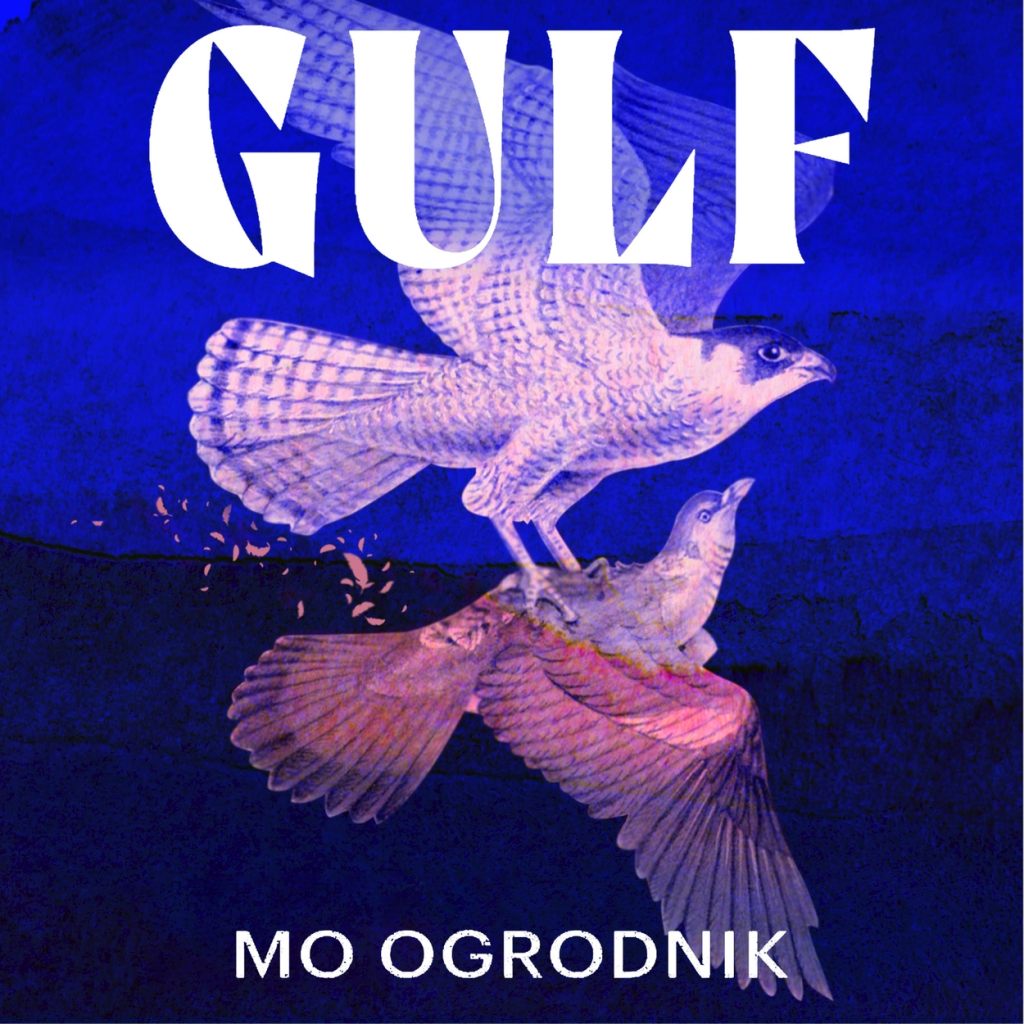
But where are the novels set in the region and written by its non-citizen residents? After all, this is the group that comprises around eighty percent of the Gulf population, occupies most of the media coverage of the region, and makes the region as ethnically diverse as it is ethically complex. One might imagine that this highly pressurized space — where designations like “expatriate,” “migrant,” and “laborer” are wielded and weaponized even when there is slippage between them — could have offered up a range of compelling narratives centered around class, race, greed, extravagance, desperation. And yet, outside of Tania Malik’s Hope You Are Satisfied (2023) and Deepak Unnikrishnan’s Temporary People (2017), I can recall no English-language novels set in the Gulf written by a non-citizen resident since Hilary Mantel’s Eight Months on Ghazzah Street (1988) nearly thirty years earlier. (Avni Doshi, a UAE resident, published the Booker shortlisted Burnt Sugar in 2021, but that novel was set in India. There have been non-English novels, but outside of Benyamin’s Goat Days set in Saudi Arabia and published in 2008, few have been translated into English.)
So it seems worth considering that in the spring of 2025, not one but two were published: Uttama Kirit Patel’s Shape of an Apostrophe and Mo Ogrodnik’s Gulf. Is this an emergent genre, the non-citizen Gulf resident novel written in the region’s lingua franca (or, even more pointedly: the female non-citizen Gulf resident)? And if the question perpetually asked about these residents is “What drives them?” then perhaps it’s a question worth asking about its fictions, too.
Besides the serendipity of such close publication dates, it also seems notable that both novels feature strikingly similar early scenes: a pregnant protagonist in the presence of her overbearing mother-in-law, navigating impending motherhood from inside the luxurious but emotionally stifling villa of her absent husband’s parents — all while mourning the loss of a beloved paternal figure.
Early in Shape of an Apostrophe, Lina, a young newlywed still reeling from the recent death of her father, sits in the kitchen of Meenakshi, her mother-in-law and founder of “an elite group of Dubai’s wealthiest Indian housewives.” Meddlesome Meenakshi is beginning breathless preparations for a series of elaborate Sindi customs to mark her daughter-in-law’s pregnancy. Lina cannot even “itch the underside of her left breast,” her physical discomfort a manifestation of her overall unease in this house where Meenakshi incessantly questions, prods, demands. These demands insist not on Lina’s action but on a maddening sedentary inaction, lest she imperil the safety of her fetus (“Now get off bar stool. No need to be so high up when you’re pregnant,” Meenakshi nags later in the scene.) This forced stasis vexes Lina, an accomplished advertising executive on the precipice of a promotion who is constantly in motion — dealing with the administration of her father’s death; working a full-time job; discussing her ambivalence about motherhood and the limitations it might present with her endearingly blunt Emirati friend, Noor.
In a kind of mirror scene in Gulf, Dounia, a young Saudi woman, delivers tea to her bedbound mother-in-law. As in Shape of an Apostrophe, a precarious stool is also present in this scene. Here, Dounia is “struggling to lower her pregnant body — legs spread almost squatting” to begin the medicinal routine of slathering the legs of her new husband’s mother in Vaseline. Dounia uses this time of forced caregiving to consider all she has lost: the inheritance of her female-run family date farm after choosing to marry a railroad scion, the support of her recently deceased father-in-law, the company of her husband as he begins increasingly frequent business travel. Loneliness has beset her in this new house, as does resentment about the nature of the labor she must carry out for her mother-in-law — “the ritual was about service, not camaraderie,” Dounia notes — foreshadowing a bitterness that will overtake her later in the novel with the arrival of her child as well as Flora, a domestic worker from the Philippines.
Both scenes are indicative of these novels’ central themes: the overlapping spheres of domesticity, autonomy, labor, gender, and belonging. Though the dramatic tension of Shape of an Apostrophe seems activated by Lina’s impending childbirth, it is also drawn taut by her connection to her Indian childhood caretaker, Raja, whose ability to stay in the UAE — the place he’s lived for decades — is now tied to Lina after the death of her father. For Lina, Raja has been the kind of unfaltering man who “cares for you their entire life, drops you off at school, lies away on the bedroom floor when you’re convulsing from fever, cooks you every meal and makes sure to include sev mani twice a week,” muddying a neat delineation of work, family, and obligation. Lina also becomes embroiled in the fate of Raja’s ambitious daughter, Shobha, who has run away after her father arranged from afar for a villager to marry her. There are rich parallels here as Lina travels to India to meet Shobha but also considers termination of her pregnancy, fretting how women’s “reasons, being of the presumed self-indulgent variety, required explanation, elaboration, psychological assessment.”
Dynamic motif and symbolism pervade the narrative. Lina is constantly sketching, drawing portraits of her late father to hang in her child’s bedroom or quickly composing “a woman with a reverse pregnancy, belly protruding out of her back.” The images she creates are representative of her fixations, but the act of sketching seems equally emblematic — Lina is always making, erasing, finding “playfulness in the flecks of black landing in unexpected places.” She is a woman who must self-create, and this symbolism is elsewhere too, including in Fijian coins “featuring a gaping hole in the middle” she finds near the garbage that belonged to her late half-Fijian father. The coins have no real utility: Lina is not Fijian, nor can they be used as currency in either India or the UAE, places where she herself doesn’t even quite belong. The question of worth and value sit at the heart of the interiority of this woman, concerned that pregnancy might further erode the very center of her.
It is the narration and perspective that is perhaps the most compelling element of this novel. Patel skillfully employs free indirect discourse, allowing the reader to feel privy to the thoughts of the protagonist, and Lina is constantly making arresting linkages. On a drive between Abu Dhabi and Dubai, returning home after packing up her late father’s belongings, she looks out at the desert setting as she remembers how she used to sketch these images from the backseat of her father’s car. She sees the skyline change as she is contending with mirages —we are in her present, past; we are seeing the landscape shift. We are inside her thought process; the breathless quality of these connections almost feels like it could destabilize the narrative, but it instead offers us access to the free-wheeling associative mind of a third-culture kid of the Gulf. “Left with no choice, no aspirational prototype, Lina had to be who she was” — she is singular.
This narrative perspective only falters when we depart from this closeness. Though most chapters hew to Lina, a few present the perspectives of Meenakshi, Lina’s husband Ishaan, and Raja’s daughter, Shobka. But they are too infrequently utilized to feel like more than ungainly devices, these characters thoughts less subtle and more forced, as when Meenakshi describes her daughter-in-law as “[flitting] about woker-than-though,” which seems tonally inconsistent with her stately character.
Gulf engages with some of these same techniques and themes, though in attempting to offer a wider cast of characters, it does so to largely diminishing effects. In alternating chapters, we move between five women — the aforementioned Dounia in Saudi Arabia; Flora, the Filipina woman who migrates to Saudi Arabia after the death of her son and takes a job as Dounia’s domestic help; Justine, a bewildered American hired to work as a curator at an unopened museum in Abu Dhabi; and Eskedare, a free-spirited Ethiopian teenager who dreams of the Gulf after the departure of her childhood friend but becomes disastrously tied up with Justine. Finally, there is Zeinah, a young woman in Syria who marries an ISIS fighter and is coerced into joining a morality brigade. In this novel, labor, as well as the other themes that animate Shape of An Apostrophe — domesticity, autonomy, gender, and belonging — are treated with a heavier hand.
Ogrodnik, a filmmaker, is at her best when offering arresting cinematic descriptions. We read that Dounia finds herself feeling trapped at her in-laws’ villa with “the decadence of a coiffed casket.” Zeinah, waiting to have her IUD inserted at the behest of her husband in a Raqqa clinic recently overtaken by ISIS, finds herself “in a barren room, noting the rectangles of pale paint where medical posters of female anatomy must have hung.” But Ogrodnik’s descriptive writing buckles when saddled with heavy figurative language and imagery. Ogrodnik writes of Dounia: “like the tomatoes beneath her bedroom window, she’d never thrive.” Equally cumbersome, a young Eskedare watching “men unroll a new image across a billboard: a golden cage, surrounded by palm trees, imprisons a woman with her mop and bucket.”
And if narrative perspective and point of view are notable highlights of Shape of an Apostrophe, they are perhaps the weakest aspects of Gulf. Ogrodnik’s truncated scenes result in disjointed chapters that don’t allow full character arcs. Dounia’s encounters with Flora and Justine’s entanglement with Eskedare are heavily choreographed, and the inner worlds of each character is offered through flat exposition, as when Justine “thought about her life” or “considered her life…and began to fear the future.” Too often, we get the same broad emotional states mapped onto two separate characters: both Justine and Zeinah “felt wary,” both Flora and Dounia “felt self-conscious.” Ogrodnik attempts the polysymphonic, but the instruments all sound too similar.
Without room for longer chapters that can luxuriate in nuance, characters’ interiorities are often reduced to truisms. Here we have Zeinah, though it could be Justine, and also feels like an undercooked authorly intrusion: “perhaps it was true: all progress contained seeds of violence, but she wondered if she was willing to serve this vision, if she was capable of the sacrifice, the torment.” A few misplaced moments of free indirect discourse, so illuminating in Shape of an Apostrophe, also destabilize the point of view in Gulf, as when we are suddenly privy to Flora’s thought: “Two years. I can do this.” When Ogrodnik shines a light into the depths of these characters, we find little there.
So how might we define or situate these novels? Though it might be tempting to classify both as “migrant literature,” the designation doesn’t quite seem fitting. In a strictly theme-centered appraisal, Gulf’s foregrounding of Dounia and Zeinah in their homelands unsettles that definition, as does Lina’s identity as a third-culture kid raised in the UAE. And this is before even contending with the thorny imprecision of branding an author like Patel, who also grew up in Abu Dhabi, as a “migrant.”
Perhaps we might coin something akin to the Gastarbeiterliteratur (“guest worker literature”) genre born of first-generation immigrants to Western Germany in the 1970s: while still imperfect, at least themes of labor and class feel central with a designation that also gestures to the reality of Gulf residency hinging on a valid work visa. (Best to steer entirely clear of the sexist undertones of “women’s literature”; as Rebecca Solnit noted in a 2015 Literary Hub essay: “a book without women is often said to be about humanity but a book with women in the foreground is a woman’s book.”)
And though these novels are indeed about humanity, they are also both notably situated in — and situate — a distinctive setting. We might choose to instead categorize these novels as “place writing.” In Place: An Introduction, Tim Cresswell argues that “place, at a very basic level, is space invested with meaning in the context of power,” and both novels feel at their most potent when the milieu of their protagonists is active, dynamic, and indicative of humanity and agency via the specificity of the Gulf.
In Shape of an Apostrophe, we feel “place” in the careful rendering of Raja’s syntactic imperfections (“your papa is being happy your news”) which are characteristic of the negotiation of power in speaking between second and third languages in the Gulf. We feel it also in the names of cinemas – “Eldorado” – and supermarkets – “Al Adil” – that Lina frequents, celebrated spaces intentionally carved out by South Asian communities in multicultural, non-monolithic Abu Dhabi. And we feel it also in Lina’s relationship to the city itself: “Like an older sibling she both admired and resented, Lina followed Abu Dhabi around.” Her surroundings, the place she grew up, is one she neither entirely romanticizes nor condemns, as the Gulf so often is.
There are compelling moments when a sense of place is an illuminating force in Gulf, too — as when Justine is enamored with the Abu Dhabi city bus station “designed by a Romanian couple in the late ‘80’s… that possessed a modernist sensibility with space-age flourishes.” Here we are provided with a quiet harking back to a nuanced cultural history via architecture rarely offered to the UAE in narrative form. But it is once again Gulf’s ambitious breadth that is its undoing: in attempting to illustrate the worlds of its wide cast of characters, Ogrodnik offers a frustrating unevenness. American Justine is given precision in New York before her move to Abu Dhabi (“they’d planned to meet…at the corner of 105th and Broadway”) while Flora only comes from the obscurity of “a small southern island in the Philippines” and Dounia’s family date farm never has much more specificity in setting than “the rural areas” of Saudi Arabia. Cresswell notes that “places are very much things to be inside of” which is how the narrative of Shape of an Apostrophe” feels so full. But in Gulf, the settings often feel like a flat topography upon which a didactic narrative can only be viewed from a distance. Ogrodnik might heed Cresswell: “We do not live in landscapes — we look at them.”
Perhaps classifying these two novels is a fruitless, even treacherous, endeavor in the same way declaring a Gulf non-citizen a “migrant,” “laborer,” or “expat” is. One notable fact they do share, though: neither were written by a current Gulf resident — Ogrodnik and Patel now live outside the UAE, a place where media content restrictions and labor laws might continue to stifle novelistic output from non-citizen residents both in terms of themes and the economic practicalities of a writer’s life. It might be practical to consider the words of Hilary Mantel on writing Eight Months on Ghazzah Street, even if they are self-censoring: “I couldn’t begin writing it until I had left the kingdom behind me for good.”
So perhaps it’s worth celebrating these two books simply for existing, for how they offer readers narratives through a particular lens, even the hyper-specificity of fiction conjured up in English by non-citizen Gulf residents. Deepak Unnikrishnaan certainly appears even more singular — his Temporary People is the only notable English-language novel by a non-citizen I can recall published while still a Gulf resident. As guest editor of a recent UAE edition of the British literary magazine Wasafiri, he even noted: “In some ways, the writers/artists/scholars who live and work here have more to lose compared to those who write from afar.”
Writing a book, living a life in a country where residency comes with precarity — they’re both perilous endeavors on their own. May we have more artists willing to take both risks at the same time.



